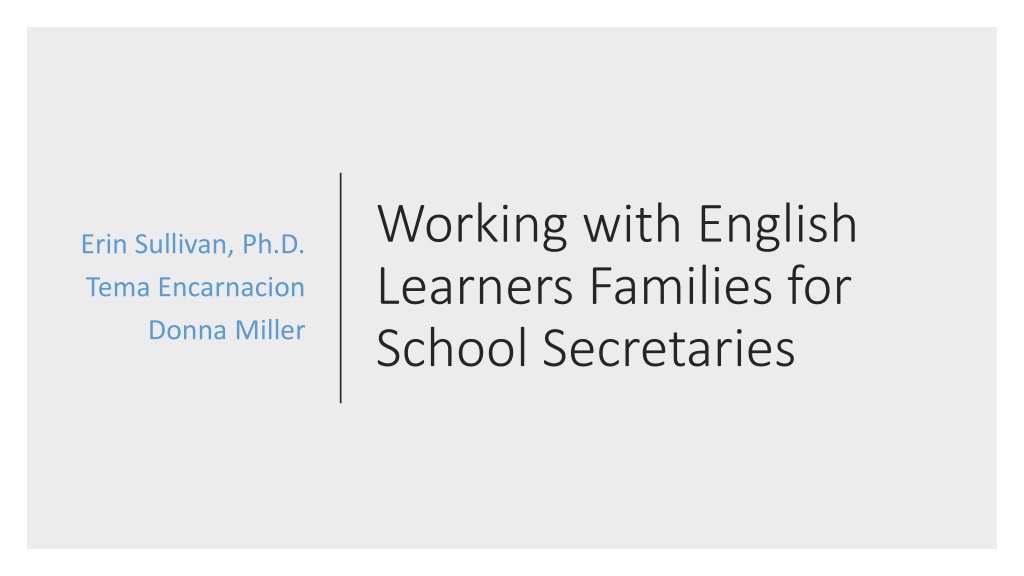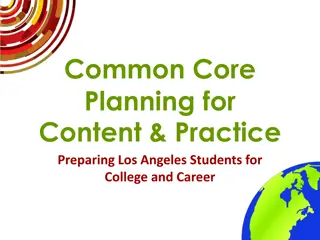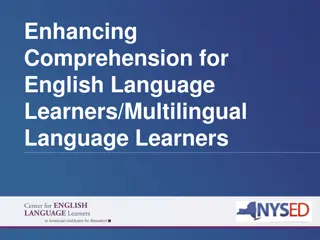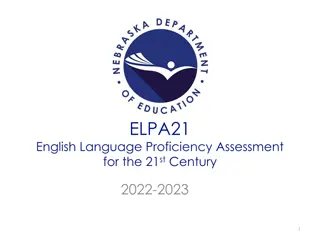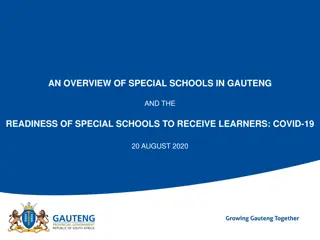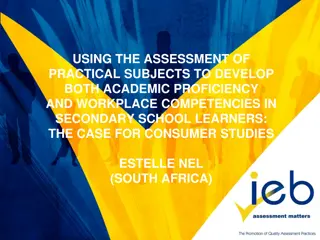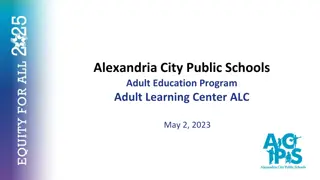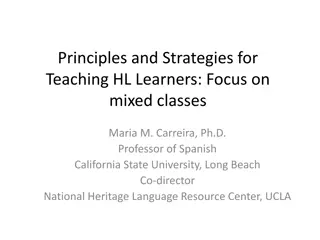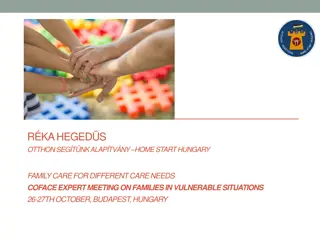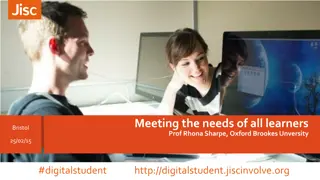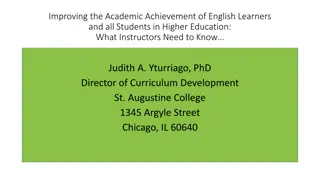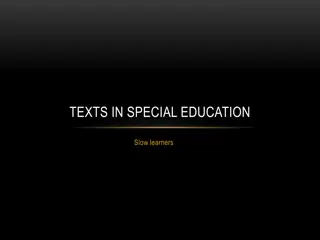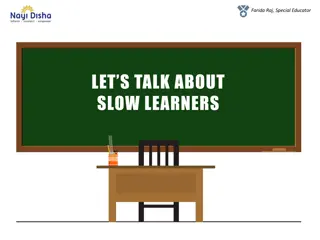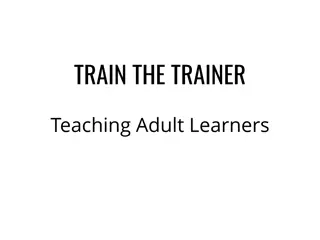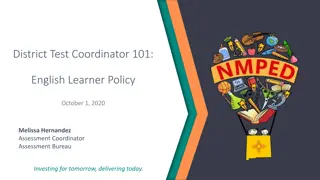Working with English Learners Families in Schools
This resource discusses important aspects of working with English learner families in schools. It covers topics such as reasons for immigration, the Home Language Survey, Welcome Center referrals, and guidelines for assisting students with English language support needs. The content provides guidance for school secretaries on how to identify and support students who may require English language services.
Download Presentation

Please find below an Image/Link to download the presentation.
The content on the website is provided AS IS for your information and personal use only. It may not be sold, licensed, or shared on other websites without obtaining consent from the author. Download presentation by click this link. If you encounter any issues during the download, it is possible that the publisher has removed the file from their server.
E N D
Presentation Transcript
Working with English Learners Families for School Secretaries Erin Sullivan, Ph.D. Tema Encarnacion Donna Miller
Why do families immigrate? Brainstorm reasons why people immigrate to the United States?
In accordance with federal and state requirements, the Home Language Survey will be administered to all students and used only for determining whether a student needs English language support services and will not be used for immigration matters or reported to immigration authorities. Students who indicate a language other than English on two or more of the questions may need to be referred to the Welcome Center. Consult the Welcome Center Guidelines Students not indicating a language other than English on two or more of the questions should not be referred to the Welcome Center unless they come from a country where World English is spoken. Home Language Survey
Welcome Center Referrals Students enrolling with international transcripts in grades 9-12. All students in grades 1-12 who are new to a Maryland public school system who indicate a language other than English on at least two of the questions on the Home Language Survey (MSDE translations) unless there is proof that the student has exited from another ESOL program. For students who speak a variety of World English, please contact the Welcome Center to determine if the family should be referred to the Welcome Center. Note: MD transfer students DO NOT need to come through the Welcome Center Who goes to the Welcome Center? What about students who are enrolling from a Maryland school outside of BCPS? Confirm if the student was receiving ESOL services or exited from an ESOL program in their previous school system. If so, inform the ESOL teacher so the teacher can complete an EL Update and begin providing ESOL services. If it is unclear if the student was receiving or exited from ESOL services in the previous MD district, contact the Welcome Center for further guidance.
There are times when a parent may choose to have their child not receive or opt out of ESOL services. Students who have waived services do not receive direct ESOL instruction. These students are still considered to be active English learners and continue to qualify for both instructional supports and assessment accommodations. Waiving ESOL Services Students who have waived ESOL services also must continue to take the state-mandated English language proficiency assessment (ACCESS for ELLs 2.0) until they meet the state-defined exit criteria. A family may choose to rescind the waiver at any time. Students whose families have waived ESOL must enroll their children at their home schools. Students cannot be denied access to their home schools based on English proficiency. For students entering BCPS from another Maryland school system who are choosing to waive ESOL services, contact Emee at the Welcome Center so she can add the student's ESOL information into SIS.
EL Enrollment Sequence For Students Referred to the Welcome Center Home Language Survey Family goes to the Welcome Center Student enrolls in the school
Who goes to the Welcome Center? Javier is a 10th grader. He immigrated to the United States when he was 12. He is transferring into BCPS from Prince George's County where he was enrolled in an ESOL class. Javier's family would like him to attend his home school instead of an ESOL center. What should you do? Contact Emee at the Welcome Center so she can add the student s information to SIS. Diana is a 10 year old student coming from El Salvador. She completed 3rd grade in December. This is her first time entering school in the United States. Diana s parents indicate Spanish for all of the questions on the Home Language Survey. What should you do? Refer the family to the Welcome Center.
Who goes to the Welcome Center? Alex's family moved to Baltimore County from Brazil where Alex was in a bilingual kindergarten. Alex was born in the U.S. He is now entering BCPS as a first grader. His parents have indicated English for all of the questions on the Home Language Survey. What should you do? Enroll the student. David is a new 8th grade student coming from Jamaica. His family has completed the Home Language Survey and indicates English for all of the questions. What should you do? Contact the Welcome Center for guidance.
Interviewing the student to gain a better understanding of their educational background Testing of English proficiency in order to determine ESOL services Evaluation of foreign transcripts Recommendation for grade placement Residency verification Completion of the required school registration forms Referral to a health center for immunizations Completion the meal benefit form (as available) Completion the privacy opt out form Explanation of the US school system What Happens at the Welcome Center
Review the documentation collected at the Welcome Center. Collect any additional BCPS-required documents for enrollment. (Requesting immigration status and/or social security numbers is prohibited by federal law.) Add the student s information to SIS. Inform the ESOL teacher, the school testing coordinator and the school nurse of the new student and provide any requested information. What happens after the family goes to the WC?
School districts must provide all children with equal access to public education at the elementary and secondary levels. A state may not deny access to basic public education to any child residing in the state, whether present in the U.S. legally or otherwise. Students' Rights Districts may not request information with the purpose or result of denying access to public schools on the basis of race, color or national origin. School districts may not prohibit children from enrolling in schools based on their or their parents or guardians' immigration status. Undocumented students have the same right to public education as U.S. citizens and therefore if they meet the criteria the McKinney-Vento Act applies to them Students can attend school from the ages of 5-21 regardless of whether they will meet graduation requirements by their 21st birthday.
But We Don't Speak the Same Language As you watch this video, think about: How did the two participants communicate? What did they do? What made the encounter pleasant for the participants? Have you had experiences like this? What did you do?
Linguistic Considerations Slow your speech Use simplified language Try not to use idiomatic expressions Show, rather than say Use visuals Use affirming body language Literacy Considerations Some families may not have literacy in their first language. Communicating with Non- English- Speaking Families
Available resources ESOL wiki www.tinyurl.com/esolwiki I-speak card Available translations (esp. the forms) Google translate Language Line Liaisons Onsite interpreters Useful phrases document Cross Cultural Communication Language Line Practice Before using the Language Line, attempt to communicate with the family in English. Wiki scavenger hunt find 2 documents that you'll use next week
Additional Learning Opportunities Spanish for Educators Refugee webinar Welcome Center Visits
If you have questions or concerns, contact: Questions? The ESOL Office - 443.809.9640 The Welcome Center - 443.809.6752
Reference Materials This presentation www.tinyurl.com/bcpssecretary Refugee Toolkit for Schools http://www.brycs.org/documents/upload/School-Enrollment.pdf Dear Colleague Letter ttp://www2.ed.gov/about/offices/list/ocr/letters/colleague-el-201501.pdf Fact Sheet http://www2.ed.gov/about/offices/list/ocr/docs/dcl-factsheet-lep-parents-201501.pdf Plyler v. Doe 30 years later http://immigrationimpact.com/2012/06/15/after-30-years-plyler-v-doe-decision-survives-but- remains-under-attack/ Chilling Effect from Alabama Law http://www.nytimes.com/2011/10/28/us/alabama-immigration-laws-critics-question-target.html
